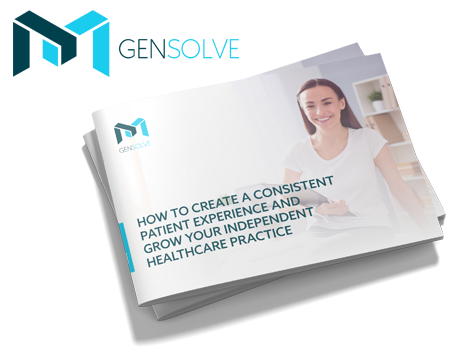The key focus for any healthcare or lifestyle practitioner is being able to provide quality, individual care for their patients. If you offer a consistently great patient experience, personalised to each individual, in a practice where they feel completely at ease, they will want to return, and your practice will thrive.
But this takes time and effort to achieve. So, ask yourself: are you spending enough time on your patients? Or is your energy going into filling out spreadsheets and drowning in administrative tasks?
As an independent practice grows, many practitioners find direct contact with their patients dwindles in exchange for managing patient-related administration, logging accounts or looking after other admin tasks that might require multiple spreadsheets or even paper notes.
Business admin is essential and of course needs to be done. But if you’re spending more time on paperwork than you’re spending with your customers, those vital customer relationships will start to suffer.
The Challenges of Growing your Practice
The first thing to realise is that you’re not alone. These challenges are common for independent healthcare practitioners and are actually a sign that your practice is starting to grow. The important thing now is to take action if you don’t want your growth to stall or worse, to slip backwards.
Understand what it means to improve patient engagement
To achieve the happy medium of repeat patients and steady revenue, as well as long-term patient referrals, you need to focus on creating a good environment and consistent patient experience that appeals to your clients – and that takes time and commitment.
You can’t be building a patient engagement model like this if your attention is directly elsewhere. You need to use tools that support you in the business side of your practice, that were designed to tackle industry-specific tasks and that actively help you achieve your ultimate goal – to generate more revenue.
The old systems you used when you started out are no longer adequate for your growing business if they no longer helping you to achieve this goal. It’s time to change the way you do things if you want to see different results.
The tools that you need to grow your revenue
Look at your current business management systems. Are you still using spreadsheets and paper patient records? These systems may be cheap but how much are they costing you in lost business? If you are using basic software, are you finding yourself adding layers of work yourself to make up for features you now need that the software is lacking?
There comes a point where you need to rethink what your business needs to really support the clinical side of your practice, the side that deals with the patients that will ultimately dictate whether you succeed or not.
So what tools are we talking about here? Let’s start where we want to end up: asking some important questions about how you currently go about creating that ideal customer experience that will generate return visits.
1. Making and managing appointments
Ideal scenario: First time patients are able to make an appointment as soon as they need to following injury or referral. The process is easy and fast, the appointment confirmed at the point of contact and diarised. Follow up appointments are made at the end of each treatment session or automated reminders sent out at regular intervals. For you, you can see the appointment book from across the whole practice, by practitioner, location, rooms, classes…everything you need to get a single view of how busy the practice is.
How do your patients currently make appointments? Consider how many clients you’ve lost because at the time they wanted to book, they weren’t able to? So when they were on a specific page of your site, or when they tried to call but gave up. Take the time now to consider the whole booking experience for your client, to make it easy for them and to ensure clients don’t slip through the cracks.
When it comes to reviewing how your business is doing on a day to day basis, having a comprehensive view of the appointment book is critical. Your system needs to have full functionality to allow you to understand how busy practitioners, rooms, locations and classes are.
2. Recording patient data and creating treatment plans
Ideal scenario: Patient details are recorded once in a standard format and stored in a single, secure place. Comprehensive medical records are included to give a broad picture for personalised care and to inform an ongoing treatment plan. Updating records is fast and easy. Contact data is linked with the business systems so keep all records up to date.
How comprehensive is your current system for capturing patient data? Does it allow you to access other external tools for better diagnostics or care plans? Is it secure? Is that data vulnerable to loss, errors in detail or does your system make it necessary for data to be collected more than once?
The more information you hold on your patients, the more personalised you can make their ongoing treatment plans. Everyone wants to be treated based on the unique characteristics of their case.
3. Managing the business side of your practice
Ideal scenario: Your admin, accounting, staff wages, facility overheads, inventory management and collecting payments all happen on a single platform. There is no multiple data entry, with all relevant records being updated at once. All iterations of the platform, whether on the reception desktop, your home laptop or your phone are kept in sync. Data is secure and can’t be lost.
Still using spreadsheets, paper or a basic piece of software that isn’t up to the job? What happens if you lose unsaved files? How many times do you have to input the same data? If your data is all stored on your hard drive, are you backing it up somewhere?
How much time is it taking you to keep your records in order? If you want to understand your financial forecasts, can you do so easily? What about keeping track of suppliers, or emails you’ve sent out to your patients?
Finding the right practice management solution to drive revenue
It might seem as though you’re saving money by sticking with an old management system. But bring it back to your goal: creating that consistent patient experience that drives return visits and in turn, boosts revenue.
Is your current system actively helping you deliver a better experience to your customers? Do you still think you’re saving money or is your current system actually losing you revenue?
You need to look ahead, to the practice you want yours to grow into and make sure that whatever practice management solution you choose actively supports that goal. Think about your practice as if you were the patient. How would you like your experience of treatment to be?
If your management system isn’t directly helping you help your patients, it’s time for a change. Improving your revenue means improving the customer experience. It’s that simple.
















